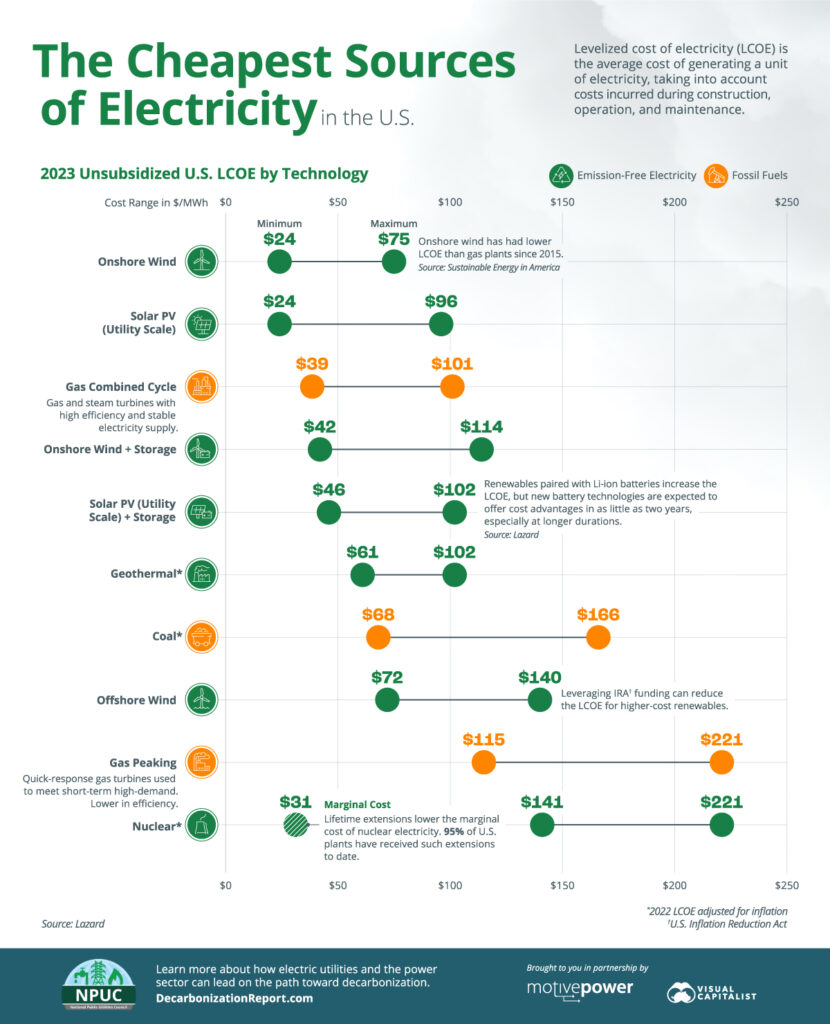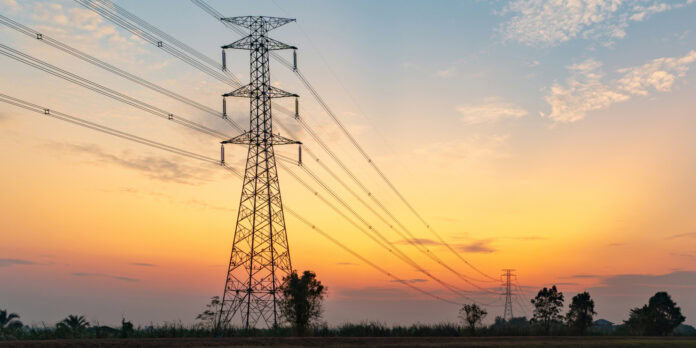Table of Contents
Electrical grid infrastructure in the United States is under unprecedented strain.
New technologies, extreme weather, and societal changes are driving the demand for power to new heights.
The Centre for Strategic and International Studies identifies a “confluence of three trends [that ] will drive a sustained period of electric demand growth.”
- Reshoring of industry
- AI-driven database expansion
- Broad-based electrification (largely to support EV charging networks)
Not only is utility grid infrastructure aging but, in many ways, it “wasn’t built” for today’s climate and the rapid proliferation of extreme weather events.
A microgrid is a localized solution that provides greater energy security for consumers connected to it and contributes to the overall resilience of the utility grid.
But what exactly is a microgrid, and how does it work?
Read on to find out.

Source: Energy.gov
How Is a Microgrid Defined?
Microgrids are distributed energy resources (DERs) that provide off-grid electricity generation and storage to communities and organizations independently or in conjunction with the utility grid.
The US Dept. of Energy defines a microgrid as follows:
A microgrid is a group of interconnected loads and distributed energy resources within clearly defined electrical boundaries that acts as a single controllable entity with respect to the grid.
A microgrid can operate in either grid-connected or in island mode, including entirely off-grid applications.
In simpler terms, microgrids supply electricity intelligently to a relatively small number of homes and facilities within a fixed geographical area.
In communities without access to power lines and transformers, microgrids can be the only source of electricity without connection to the utility grid.
However, the far more common use case connects microgrid consumers to an energy generation source — such as solar panels or wind turbines — AND provides a bidirectional connection to the power grid.
It’s Local
Microgrids are local by definition.
As the name suggests, a microgrid is essentially a much smaller localized version of the national power grid.
It provides electricity to connected homes and businesses from a small-scale generator — often a clean, renewable energy source, but conventional fossil fuel generators are also used.
Most modern microgrids also use battery storage as a backup source as well as connecting bidirectionally to the utility grid.
It’s Independent
Microgrids were first widely used by large institutions, such as military bases, college campuses, and hospitals, that demanded reliable access to power during blackouts.
More recently, microgrids have been deployed to provide community energy security, increase access to affordable renewable energy sources, and improve the overall resilience of the power grid.
Most microgrid systems operate in coordination with the utility grid but can provide self-generated or stored electricity during blackouts, offering greater energy security to homes and businesses.
It’s Intelligent
At the heart of every microgrid system is the controller.
A microgrid controller intelligently manages independent electricity generation within the network as well as controlling connections to the utility grid.
Also known as Energy Management Systems (EMS), microgrid controllers are essential to maximizing return on investment and reducing electricity costs to the lowest possible level.
Most modern microgrid controllers are autonomous and leverage machine learning and artificial intelligence to regulate power and achieve cost savings.
A crucial way that smart energy management systems save customers money is by analyzing the cost of on-grid electricity in real-time and purchasing power at its cheapest.
Standalone whole-home generators like EcoFlow DELTA Pro Ultra offer similar cost savings by consuming on-grid power only during off-peak hours, avoiding Time-of-Use rates.

(Source: ScienceDirect)
How Do Microgrids Work?
There are two basic types of microgrid — grid-connected and off-grid.
Since independent microgrids are relatively rare and suitable only for communities without access to the utility grid, we’ll focus on how the far more common (and complex) grid-connected microgrid systems work.
Grid-connected microgrids require the following components.
- Electricity generator: Common sources include solar panels, wind turbines, fossil fuels, hydropower, biomass, and fuel cells
- Storage: Typically, lithium-ion or LiFePO4 rechargeable batteries
- Microgrid controller or energy management system (EMS)
- Bidirectional connection to the power grid and auto-switch
If the electricity generator runs on renewables — like wind, solar, and biomass — battery storage is essential due to intermittency.
Wind turbines don’t output power on still days, and solar panels don’t work at night.
As with grid-tied and hybrid solar systems, microgrids consume utility electricity when power production from the generation source is insufficient to meet demand or when battery storage is depleted.
The exact configuration of a microgrid system depends on many factors, most crucially:
- Generator type
- Number of customers/connections
- Total electrical load requirements
- Type of connection to the utility grid
Some, but not all, microgrids sell power to the utility grid when generation exceeds customer and backup storage demands.
Payment is typically received as credits against the consumption of on-grid power, which can lower the overall cost per kilowatt-hour (kWh) for microgrid customers.
Because burning fossil fuels to generate electricity is typically more expensive than consuming on-grid power, only microgrids that utilize renewable energy sources sell power to the grid.
It’s also possible to combine multiple electricity generation sources and tie them to a single microgrid.
Why Are Microgrids Beneficial?
Microgrids have multiple benefits, both at the local and national level.
Here’s a summary.
Energy Security
Most microgrids operate independently and symbiotically with the utility grid.
When customer demand exceeds the output of a microgrid’s electricity generation source(s), the controller automatically taps into utility grid power or battery storage to provide sufficient supply.
Microgrids automatically disconnect from the utility grid during a blackout, but customers can continue to use electricity as long as the overall consumption doesn’t exceed off-grid power generation or battery storage capacity.
All bidirectional grid-connected systems that send electricity to the grid must disconnect from the utility during blackouts to prevent injury to workers trying to restore power and damage to infrastructure.
The same goes for grid-tied photovoltaic systems that don’t have solar battery storage.
By combining off-grid electricity generation with battery storage, microgrids can maintain a power supply to connected users indefinitely.
(Source: EIA)
Lower Costs
Despite massive growth in the clean energy sector in recent years, as of 2023, 60% of utility-scale electricity generation in the US still comes from burning fossil fuels.

(Source: Visual Capitalist)
However, the levelized cost of electricity (LCOE) from renewable energy sources like wind and solar energy is MUCH lower per kWh than that of any fossil fuel.
LCOE measures the lifetime costs of an electricity generation facility divided by production, enabling price per kWh comparison of different technologies and fuel sources.
A recent study found that “it’s more expensive for 99% of the country’s coal-fired power plants to keep running than it is to build an entirely new solar or wind energy operation nearby,” even when you factor in all the upfront costs.
By generating a substantial portion of power from renewable energy sources like solar farms and wind turbines, a microgrid can significantly lower the cost of electricity per kilowatt-hour for its customers.
Increased Access to Renewable Energy
Many people and small businesses who want to enjoy lower electricity prices from renewable sources and reduce their carbon footprint cannot because they lack access to a suitable installation area.
Rooftop solar photovoltaics are by far the most popular standalone renewable energy systems.
But, installation areas may be limited or unavailable for people who live in apartment buildings, shared dwellings, or businesses that don’t have access to their roofs.
Solar panels must be positioned to receive direct sunlight to maximize electricity generation from photovoltaic cells, preferably during peak sun hours each day.
By connecting an off-site community solar farm to a microgrid, customers without rooftop solar installations can gain access to renewable energy and lower electricity bills.
Resilience
Microgrids make the United States electricity supply more resilient to utility disruptions, enabling faster recovery and helping sustain mission-critical operations during power outages.
Microgrids often serve communities, but large corporations also own and operate private microgrids to protect data centers.
They’re increasingly being deployed by the Department of Defence and other institutions where uninterrupted access to electricity is essential.
Not only are microgrid customers more resilient to disruption, but by adding additional electricity generation and storage capacity, microgrids reduce strain on the utility grid.
Better Cybersecurity
The North American Electric Reliability Corporation (NERC) recently warned that US power grids are increasingly vulnerable to cyberattacks.
“The grids’ virtual and physical weak spots, or points in software or hardware that are susceptible to cyber criminals, grew to a range of 23,000 to 24,000 last year from 21,000 to 22,000 by the end of 2022, executives with the energy regulator said.”
Microgrid controllers operate independently from utility power management systems, making them much less susceptible to hacks from bad actors at home and abroad.
Climate Change
The urgent transition from fossil fuels to renewable energy sources for electricity generation is essential to limiting the devastating impacts of human-made climate change.
( Source: Climate.gov)
2023 was the hottest year on record and the worst year ever for weather and climate disasters, with 28 events costing at least $1 billion each and causing a total of $92.9 billion in losses.
Microgrids that utilize renewable energy sources to generate electricity lower fossil fuel consumption by reducing reliance on utility power, giving communities and organizations access to cost benefits and a reduced carbon footprint.
How Much Do Microgrids Cost?
The primary disadvantage of microgrid systems is cost.
While the many benefits to microgrid customers are undeniable, they come at a steep price.
A 2018 study from NREL “found that microgrids in the Continental United States cost an average of $2 million -$5 million per megawatt (MW) to develop.”
Development costs may have fallen slightly since then, but significant upfront investment is required.
The cost of a microgrid system escalates based on the following factors.
- Number of connections
- Size of electrical load (maximum output capacity in watts)
- Grid-connected or off-grid
- The level of energy security provided
The Dept. of Energy provides the following breakdown of up-front costs for a hypothetical community microgrid project:
(Source: energy.gov)
Microgrid controllers are largely autonomous, but there will still be operating costs that tend to increase with system complexity.
There are fewer direct government incentives for microgrids than for standalone Residential Clean Energy Systems like rooftop solar + storage solutions.
For example, the 30% Solar Tax Credit doesn’t apply to microgrids.
However, the Infrastructure and Jobs Act does provide federal funding for microgrids under its Grid Resilience and Innovation Partnerships Program (GRIPS).
On August 6, 2024, The DOE announced the release of an additional $2.2 billion for high-voltage transmission and microgrid projects in 18 states.
The first round of funding from the Bipartisan Infrastructure Law awarded $3.5 billion to 58 projects in 44 states in October 2023.
In total, the Infrastructure Act earmarks $10 billion for building new high-voltage transmission capacity and increasing grid resilience through systems like microgrids.
With other state and federal government initiatives supporting microgrid construction, the levelized cost of electricity per kWh is expected to continue falling far below the financial (and environmental) costs of burning fossil fuels for power.
Frequently Asked Questions
No, a solar panel is not a microgrid, and neither is a rooftop solar system that provides electricity for a single home or business. To be considered a microgrid, the system must provide electricity to multiple customers within a defined local area. Microgrids often use solar panels and other renewable energy sources like wind turbines to generate electricity independent of the utility grid.
The primary difference between a smart grid and a microgrid is scale. Microgrids are localized energy distribution designed to provide electricity to a small number of homes, businesses, and organizations in close proximity to each other within a specific geographical footprint. “Smart grid” technology is designed to improve energy efficiency, decrease costs, condition power, and increase the resilience of existing utility grid infrastructure.

Final Thoughts
Pressure on the utility grid from age, skyrocketing demand, and extreme weather events is growing rapidly.
As is the urgency of mass decarbonization and the journey towards net-zero carbon emissions.
Microgrids can help communities and large organizations achieve energy security and reduce their carbon footprint through the adoption of renewable energy generation sources like photovoltaic solar panel systems.
If you’re looking to achieve home energy security with or without connecting to a microgrid, EcoFlow can help.
We offer a wide variety of solar panels, portable power stations, and solar generators to meet your needs.
Check out our selection today.
